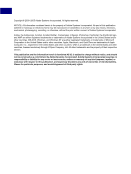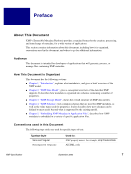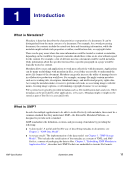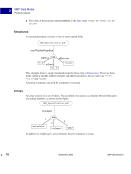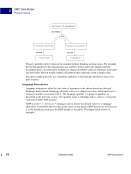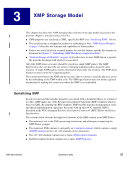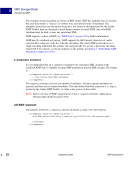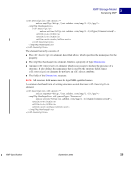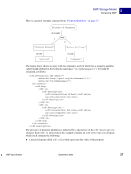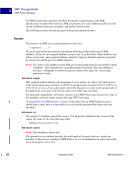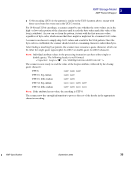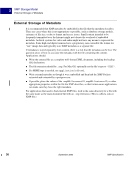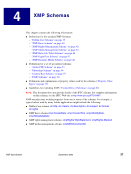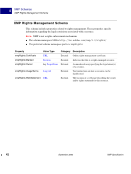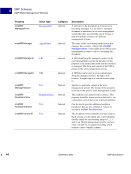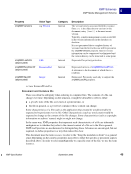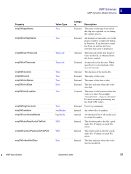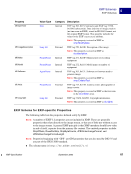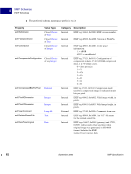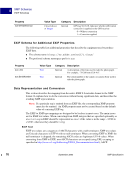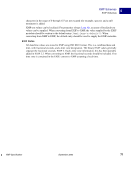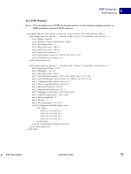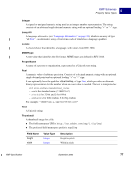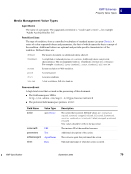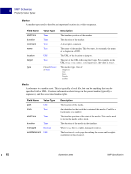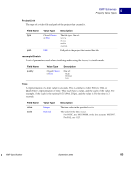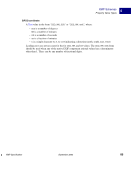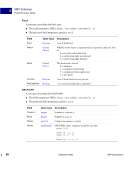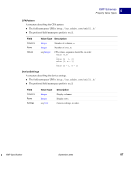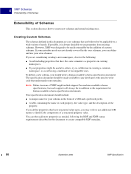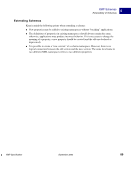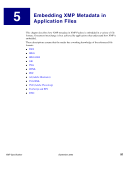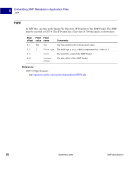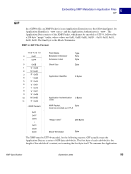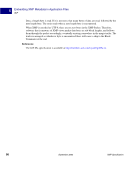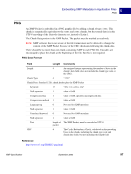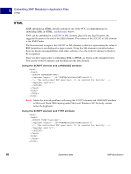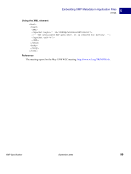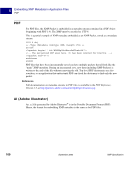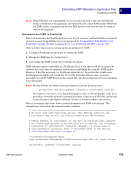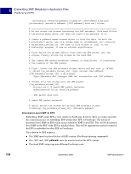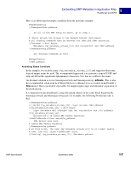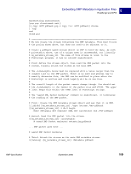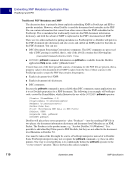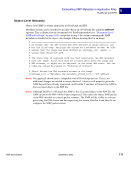22 September 2005 XMP Specification XMP Storage Model Serializing XMP 3 The examples in this document are shown in RDF syntax. RDF has multiple ways to serialize the same data model: a “typical” or verbose way, and several forms of shorthand. The examples shown here use the typical way plus a few forms of shorthand used by the Adobe XMP Toolkit they are designed to assist human readers of stored XMP. Any valid RDF shorthand may be used, as may any equivalent XML. XMP supports a subset of RDF see “RDF Issues” on page 29 for further information. XMP must be serialized as Unicode. XMP supports the full Unicode character set, and is stored in files using one of the five Unicode encodings. The entire XMP packet must use a single encoding. Individual file formats can, and generally do, specify a particular encoding, often UTF-8. For details, see the descriptions of file formats in Chapter 5, “Embedding XMP Metadata in Application Files”. x:xmpmeta element It is recommended that an x:xmpmeta element be the outermost XML element in the serialized XMP data, to simplify locating XMP metadata in general XML streams. The format is: x:xmpmeta xmlns:x='adobe:ns:meta/' ...the serialized XMP metadata /x:xmpmeta The xmpmeta element can have any number of attributes. All unrecognized attributes are ignored, and there are no required attributes. The only defined attribute at present is x:xmptk, written by the Adobe XMP Toolkit its value is the version of the toolkit. NOTE: Earlier versions of XMP suggested use of the x:xapmeta element. Applications filtering input should recognize both. rdf:RDF element Immediately within the x:xmpmeta element should be a single rdf:RDF element. x:xmpmeta xmlns:x='adobe:ns:meta/' rdf:RDF xmlns:rdf="http://www.w3.org/1999/02/22-rdf-syntax-ns#" ... /rdf:RDF /x:xmpmeta
Purchased from Demo (abedemo.tizrapublisher.com) for the exclusive use of unknown. © 2025 Demo. Please report unauthorized use to pirate@tizra.com


